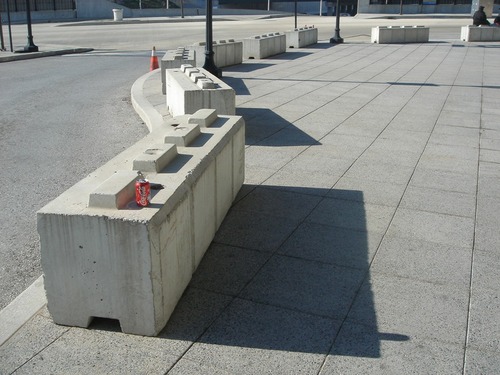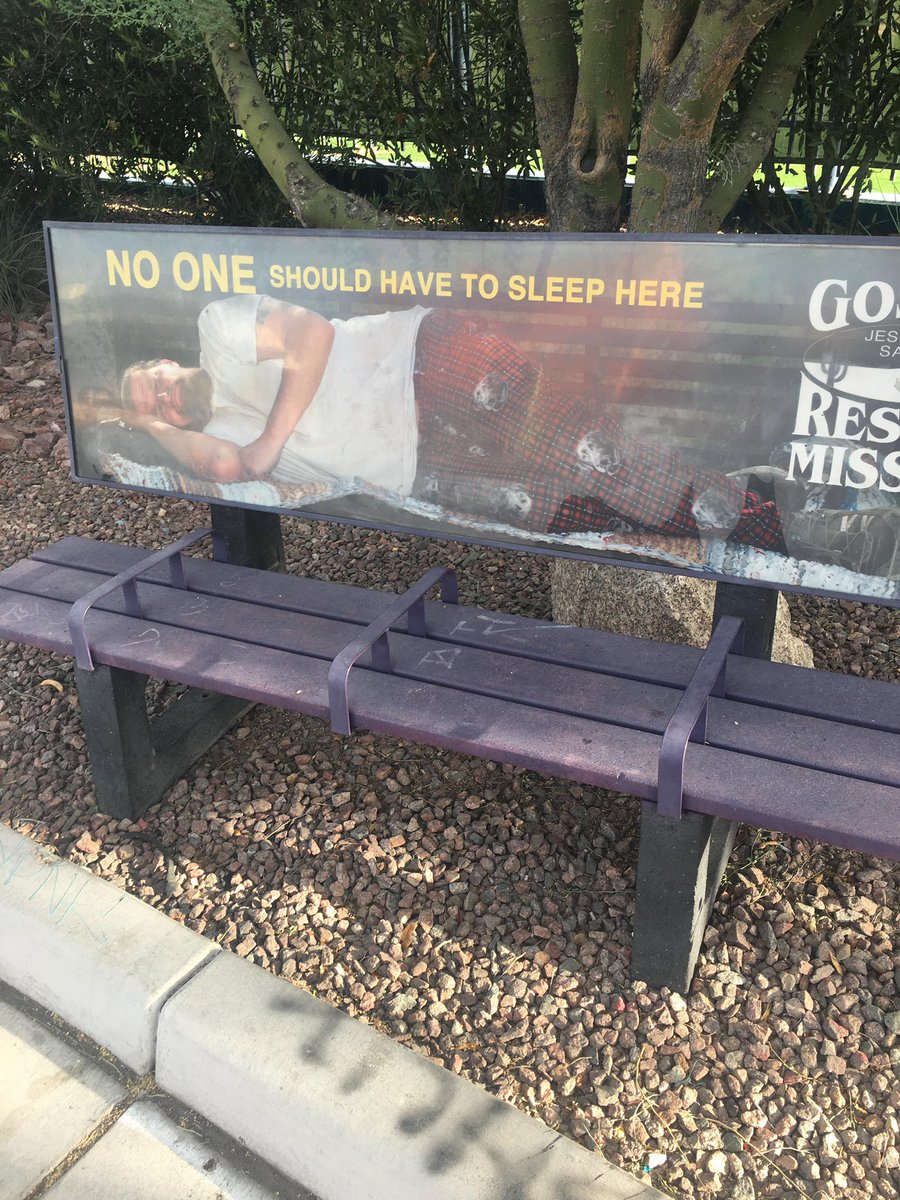Table Of Content
- We are Design Hotels.A collection of 300+ independent hotels rooted in design, locality, and culture.
- Hostile design is still a problem in our public spaces – here’s why
- Calmes: That scowl. The gag order. Frightened jurors. Who’s on trial, a former president or a mob boss?
- Editorial: The Supreme Court cannot allow homelessness to be a crime
- Camping deterrents

Advocates for the homeless say cities want more power to sweep away encampments. Cities say they desperately want some clarification and guidance from the courts. The more liberal 9th Circuit, Newsom said, had “tied the hands of state and local governments” by issuing vague rulings that invited litigation from homeless people and their advocates every time California jurisdictions tried to address the problem. Justice Sonia Sotomayor, who led the court’s liberal flank in attacking the criminalization of homeless people, struck a similar note. Explore Rhode Island School of Design’s online intensives for high school students interested in pursuing art and design in college. In a sense, Semple’s campaign merges the efforts of these two predecessors, with its worldwide focus and reliance on social media.
We are Design Hotels.A collection of 300+ independent hotels rooted in design, locality, and culture.
In early 2018, he noticed the benches of his home town of Bournemouth had been retrofitted with bars to prevent rough sleepers. Angered by this, he launched a targeted campaign to get Bournemouth Borough Council to remove them. Architecture is labeled hostile once it impedes use by any group of users, even birds.
Hostile design is still a problem in our public spaces – here’s why
We identified a certain trend to outsource management and maintenance of public space to objects, which we will call silent agents. These silent agents are specifically designed to prevent certain uses of urban space, to prevent behaviours and discourage certain social groups. While first thinking of this, we were living in Rotterdam, a city known for its migrant population and a certain harshness of its public space. Savic, a post-doctoral fellow at the department of Architecture Theory and Philosophy of Technics, TU Vienna, recently visited Calgary and Vancouver for a series of talks about hostile architecture, coercive design and how they impact cities.
Calmes: That scowl. The gag order. Frightened jurors. Who’s on trial, a former president or a mob boss?
The problem is the backless, hard concrete “furniture” is unfriendly not only to homeless sleepers but also to non-homeless bus riders, including some older people with health problems. The existence of hostile design is not to say designers themselves are the ones pushing for it – the reality is often far from it. According to Rowland Atkinson, research chair in inclusive societies at the University of Sheffield, design and designers often get co-opted into finding ways to “manage out the backend of the welfare system”. “City planning has a lot to do with things but more than city planning real-life things happen. In South Florida, a lot of people rely on the hospitality and tourism industry for their income and to live and we have seen a lot of shutdowns,” said Sklar. It’s a crisp autumn afternoon and you’re walking through your city’s downtown area.
Editorial: The Supreme Court cannot allow homelessness to be a crime
Now in its 32nd year, the lifetime achievement award is given to individuals who have made significant contributions in the hospitality industry and its many facets, including design, architecture, ownership/management, and purchasing. Hundreds of UC Santa Barbara students completed a daylong occupation of the student resources building without mishap this week. The event featured workshops, art projects and other actions to express solidarity with Palestinians, call for a cease-fire and demand an end to Israel-related investments. For all the failings of Los Angeles, when COVID-era homeless encampments were cleared from Oceanfront Walk in Venice and along stretches of Venice Boulevard, intense efforts went into offering people spots in shelters, or hotel rooms, and a host of social services. Under the circumstances, that seemed as humane and balanced an approach as possible. San Francisco, Los Angeles and other municipalities filed friend-of-the court briefs supporting the law.
Site Information Navigation
Sarah Ross’s “archisuits,” for example, are jogging outfits that incorporate substantial padding. The placement of the padding was designed specifically to fit around the hard dividers of Los Angeles benches, making it possible for the wearer to lie down comfortably. On the surface they’re just watering a garden or keeping the sidewalk clean, but they have also been used to disperse homeless people. Homeless people are the main group affected by hostile architecture, but skateboarders, loitering teenagers, and people who use drugs are also targeted in increasingly creative ways. “The bench removal actions were aimed at druggies, drunks and the homeless people, but they found other places to sleep nearby and law-abiding citizens still are left with no benches to sit on to eat their lunches, relax, talk and enjoy themselves,” she said. ‘Defensive urbanism’ interventions explicitly seek to repel certain, often vulnerable, social groups from public spaces.
Changes to minimum parking requirements near transit lines are spurring more residential development with little or no on-site parking. Kevin Bennett, Ph.D., is a teaching professor of social-personality psychology at Penn State University Beaver Campus and host of Kevin Bennett Is Snarling, a podcast about danger, deception, and desire. As part of our series on design in 2024, WeWantMore creative director Ruud Belmans offers his view on what retail and experience design might look like next year. As the design industry propelled itself forward, we were always there to champion, inform, analyse and guide the way. UK should be with you within a couple days, rest of the world 5-10 days. The Urbanist hosted a bike ride with Ray Delahanty of CityNerd on Lake Washington Boulevard on Saturday September 16.
The London Spikes Controversy: Homelessness, Urban Securitisation and the Question of ‘Hostile Architecture’
I also came across some inventive designs that I haven’t seen elsewhere, such as metal silhouettes soldered on top of warm ventilation exhausts at a CTrain station (below), a place where you could consider camping for the night. We could say that people who honestly employ unpleasant design principles are interested in a certain kind of utopia. There is a belief that by reducing the opportunities for mischief and misconduct, that will lead to a reduction in mischief and misconduct. In this logic, when there are no benches to sleep on, homeless people would have to resort to more sustainable measures, like going to a shelter, improving their lives, et cetera.
Bill would ban cities from using boulders, other ‘hostile architecture,’ to prevent camping - KIRO Seattle
Bill would ban cities from using boulders, other ‘hostile architecture,’ to prevent camping.
Posted: Fri, 26 Jan 2024 08:00:00 GMT [source]
If the Supreme Court enables more places to ramp up encampment sweeps, citations, arrests and other penalties, he said, there’s a risk of further spiraling in cities such as L.A. Debra Blake, a then-60-year-old homeless plaintiff who died during the litigation, wrote in a 2019 court declaration that she knew hundreds of people who slept outdoors in Grants Pass, about 40 miles north of the California border on the 5 Freeway. As the nation’s highest court heard arguments this week in a case expected to shape homelessness policies in the years to come, Los Angeles County Supervisor Lindsey Horvath listened angrily. Multicolored tents, protest art, and an enormous display of hand-painted canvas banners express CUNY student and faculty support for Palestine. Waikiki resident John Eckels wrote to me in an email Sunday that installing the uncomfortable new seats ignores the deeper problem of homelessness. It frustrates me that the city did not consider how uncomfortable the new seats would for the elderly, those with disabilities, and even families with small children,” said Amy Parsons, an Ala Wai Boulevard apartment dweller.

Hope for Food is a local charity based in Bournemouth set up and run entirely by Volunteers. The organisation was founded by Claire Matthews in 2012 with the aim of providing life’s basic essentials on a day to day basis to people in need of help due to the current economic climate. Hostile architecture can be incorporated into both public and private spaces. “Local governments might do it explicitly, but might also do it implicitly,” says Petty.
UC Santa Cruz has become the model for student political suppression and campus design. One of the interesting aspects of hostile design is that it is not immediately noticeable, even by graduates with a diploma in architectural design technologies, if you don’t know what to look for, although some forms can be more obvious than others. Lighting, for example, is one of the most common features used in the hostile design. Public light fixtures make us feel safe at night and help us navigate our way through the city, but it’s also being used to deter certain behaviours like criminal activity.
You see a beautifully designed bench in the park and decide to take a moment to rest and enjoy the view. In Ghana, hundreds of jagged rocks are strewn among the ground to prevent homeless people from residing there. It’s interesting to note how evident it is that these rocks only serve this one purpose. Although these benches aren’t as rigidly-segmented as the ones listed above, their unorthodox designs make it difficult for people to lie down or relax on them. After six months of renovation, these leaning bars appeared in Bay Ridge’s 53rd station on the R line. Although these beams were said to conserve space, many were quick to criticize their lack of support, especially for those who are elderly, disabled, ill, homeless, or simply want to sit down.
A team of undercover reporters even posed first as a homeless man, and then as a man in a suit, and in both cases lay on benches around the park to see how it would be handled. Regardless of appearances, park patrollers simply asked the reporter to sit up instead of laying down, so as not to prevent other park users from using the bench. This is one way of allowing public space to still be usable by anybody in the space, without pushing homeless people out of the park or employing hostile design elements. This could be as simple as placing a flower pot on an unused stairway, as seen on 14th Street in Over-the-Rhine, or it could be a slight slope on ledges that would typically be used for sitting. The slight slope makes it impossible to lay down, but it also makes your legs fall asleep if you sit on it for any length of time.
Ultimately the idea is that through awareness we can dissolve prejudice, influence planners and city councils and create more inclusive welcoming public space for everyone. Rather than focusing on the root cause of this issue, many areas in England have installed metal bars on its benches so that homeless people cannot sleep on them. This sectioning of benches also limits its seating capacity, impeding ease of public use more generally.
One common application of hostile architecture is anti-homelessness measures. In Seattle, the Seattle Department of Transportation (SDOT) undertook two different design choices that were widely reported as suspected hostile architecture. For example, it may affect a homeless man negatively to not be able to sleep in a bus shelter, but it also affects bus riders (who statistically come from lower socioeconomic groups) when they cannot use the shelter because someone is sleeping there. When considering the use of public space, de Fine Licht explains that often “there is a balance between two less well-off groups” that has to be determined. When it comes to the use of public spaces, because they are collective, anything is possible.
No comments:
Post a Comment